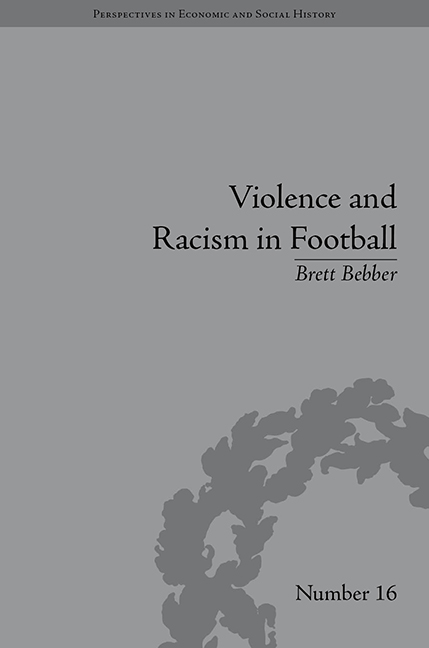Book contents
- Frontmatter
- CONTENTS
- Acknowledgements
- List of Figures
- Introduction: Sport, Politics and History in Post-War Britain
- Part I Violence and Politics in British Football
- Part II The Total Policy of Containment
- 3 Violent Environments: Physical Space, Discipline and Football Disorder
- 4 Police and the State: Tactics, Networks and the Development of Football Policing
- 5 Stretching Punishment: The State, Law and Order, and Threatening the Spectator
- Part III Racism and Cultural Conflict in British Football
- Conclusion: Legacies of Violence in British Football
- Notes
- Bibliography
- Index
3 - Violent Environments: Physical Space, Discipline and Football Disorder
from Part II - The Total Policy of Containment
- Frontmatter
- CONTENTS
- Acknowledgements
- List of Figures
- Introduction: Sport, Politics and History in Post-War Britain
- Part I Violence and Politics in British Football
- Part II The Total Policy of Containment
- 3 Violent Environments: Physical Space, Discipline and Football Disorder
- 4 Police and the State: Tactics, Networks and the Development of Football Policing
- 5 Stretching Punishment: The State, Law and Order, and Threatening the Spectator
- Part III Racism and Cultural Conflict in British Football
- Conclusion: Legacies of Violence in British Football
- Notes
- Bibliography
- Index
Summary
Throughout the 1970s the Home Office, the Department of the Environment and local police authorities in areas across Britain sought to control fans' behaviour through a variety of institutional, environmental and legal measures. While the present chapter focuses on the creation of spectating environments that aimed at restricting violence, Chapters 4 and 5 evaluate the multiple policing and juridical changes ushered in by the state. Together the three chapters reconstruct the integrated approach the state and British police advocated to discipline the growing number of unruly spectators. In many ways, these policies reflected the discursive construction of unruly spectators that challenged the sporting mythology of British nationalism. The creation of football ‘hooligans’ as animalistic and brutish allowed severe and violent physical measures to be taken against spectators without significant public outcry. As I argue in this chapter, governmental authorities developed architectural policies of dividing physical space and restricting spectators' movement that created stadium environments which invited instability and threatened rulebreakers with increasingly violent outcomes.
Successive Labour and Conservative governments gradually increased control over spectators throughout the 1970s. Manipulations to the physical environment in this arena had been ongoing since the post-war period, as sizes of crowds increased and football disorder accompanied the game's increasing popularity. The long processes of physical manipulation culminated in the 1989 Taylor Report, produced after the lethal Hillsborough disaster, where ninety-six travelling Liverpool supporters died on 15 April 1989 at an FA Cup semi-final with Sheffield Wednesday.
- Type
- Chapter
- Information
- Violence and Racism in FootballPolitics and Cultural Conflict in British Society, 1968–1998, pp. 69 - 96Publisher: Pickering & ChattoFirst published in: 2014

